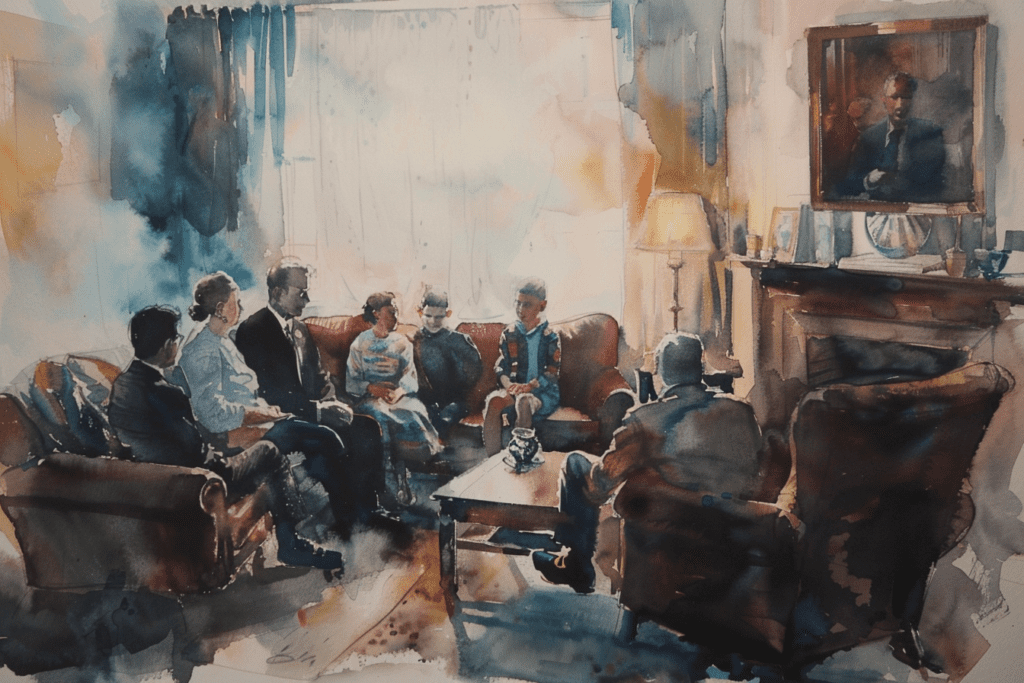
How to Proofread Your Funeral Stationery Before Printing



Introduction

Losing a loved one is one of life’s most challenging experiences, and during such a difficult time, the task of informing others can seem daunting.
A funeral announcement card is a respectful and efficient way to communicate the details of a loved one’s funeral.
This guide will help you understand what to include in a funeral announcement card, ensuring it serves its purpose with dignity and clarity.
After reading the article please consider our collection of personalised order of service booklets.




Article Contents

Importance of Proofreading Funeral Stationery

Preventing Embarrassing Errors
The last thing you want is to notice a mistake after the stationery has been printed. Misspelt names, incorrect dates, or grammatical errors can detract from the dignity of the occasion and cause additional stress.
Proofreading helps to avoid these issues.
Showing Respect
Carefully prepared and accurate stationery shows respect for the deceased and those attending the service.
It reflects the care and thought you’ve put into honouring your loved one, ensuring that the details are presented correctly and professionally.
Ensuring Clear Communication
Accurate details are essential for clear communication. Providing attendees with the correct time, date, and location ensures that everyone arrives at the right place and time, avoiding any confusion during an already emotional day.

Step-by-Step Guide to Proofreading Funeral Stationery

Step 1: Take a Break
After writing your content, take a break before proofreading. This will help you approach the text with fresh eyes, making it easier to spot errors. Even a short break of an hour or two can make a significant difference.
Step 2: Print a Draft
Proofreading on a screen can be less effective than reading a printed copy. Print a draft of your stationery to see how it looks in physical form. This can help you catch errors that you might miss on a screen.
Step 3: Read Aloud
Reading the text aloud can help you identify awkward phrasing, missing words, or typographical errors. It forces you to slow down and pay closer attention to each word.
Step 4: Check for Consistency
Ensure consistency in formatting, font sizes, and styles. Consistency in headings, subheadings, and body text maintains a professional appearance.
Also, check that the tone and style of writing remain consistent throughout the stationery.
Step 5: Verify Names and Dates
Names and dates are some of the most critical elements in funeral stationery. Double-check the spelling of all names and verify dates to ensure they are correct. A mistake in these areas can be particularly distressing.
Step 6: Review for Spelling and Grammar
Use tools like spell check, but don’t rely on them entirely. They might not catch every error. Look for common mistakes such as homophones (e.g., their/there), incorrect punctuation, and incomplete sentences.
Step 7: Get a Second Opinion
Ask a friend or family member to review the stationery. A fresh set of eyes can often catch errors that you might have overlooked. They can also provide feedback on the overall appearance and tone.
Step 8: Check Contact Information
Ensure that any contact information, such as phone numbers or email addresses, is correct. This is especially important for RSVP details and any points of contact for further information.
Step 9: Review the Layout
Check the overall layout to ensure it looks balanced and professional. Pay attention to margins, spacing, and alignment. A clean, well-organised layout enhances readability and the overall presentation.
Step 10: Conduct a Final Review
Before sending the stationery for printing, do a final review. This should be a thorough check, combining all the previous steps. Take your time and make sure everything is perfect.

Common Mistakes to Watch Out For

Typos and Misspellings
Even a single typo can stand out and detract from the professionalism of your stationery. Be meticulous in checking each word.
Incorrect Dates or Times
Ensure that all dates and times are correct and correspond with the details of the funeral service.
Formatting Errors
Inconsistent font sizes, styles, and formatting can make the stationery look unprofessional. Maintain a uniform style throughout.
Missing Information
Make sure that all essential details, such as the name of the deceased, date and time of the service, and location, are included and correct.
Grammatical Errors
Check for subject-verb agreement, correct tense usage, and proper punctuation. Grammar errors can distract readers and reduce the clarity of your message.

Tips for Effective Proofreading

Stay Focused
Find a quiet place free from distractions to do your proofreading. Concentration is key to catching errors.
Take Your Time
Don’t rush the process. Taking your time ensures a more thorough review and reduces the likelihood of overlooking mistakes.
Use a Checklist
Create a proofreading checklist to ensure you cover all the critical aspects. This helps to systematically review each element of your stationery.
Rest and Review Again
After your initial review, take a break and then review the material again. This fresh perspective can help you spot errors you might have missed.

Conclusion

Proofreading your funeral stationery is a vital step in ensuring that everything is perfect for the service. By following this guide, you can prevent errors, show respect for your loved one, and ensure clear communication with attendees.
Take your time, review each detail carefully, and don’t hesitate to ask for help. In doing so, you’ll create beautiful, error-free stationery that honours your loved one’s memory in the best possible way.







